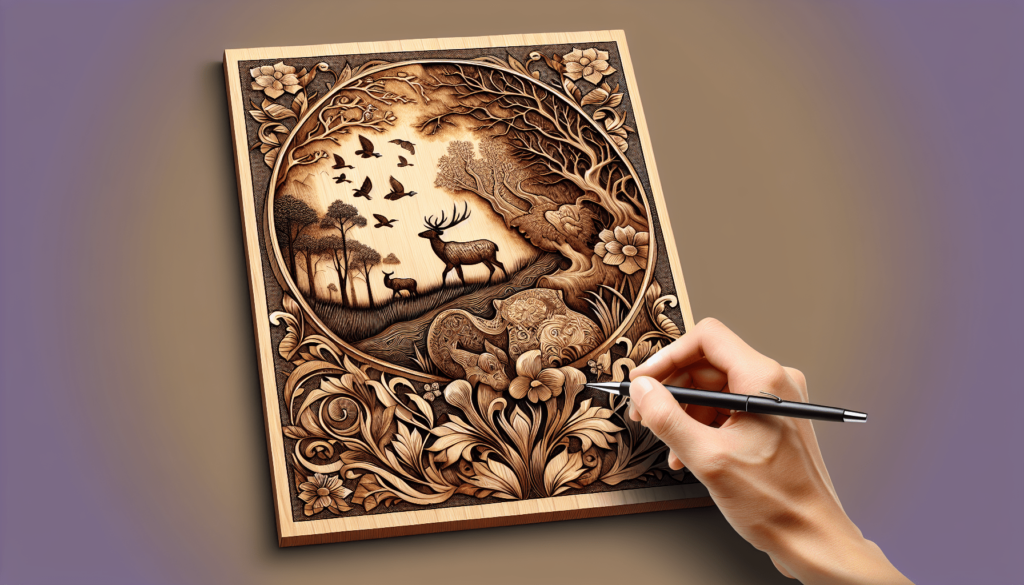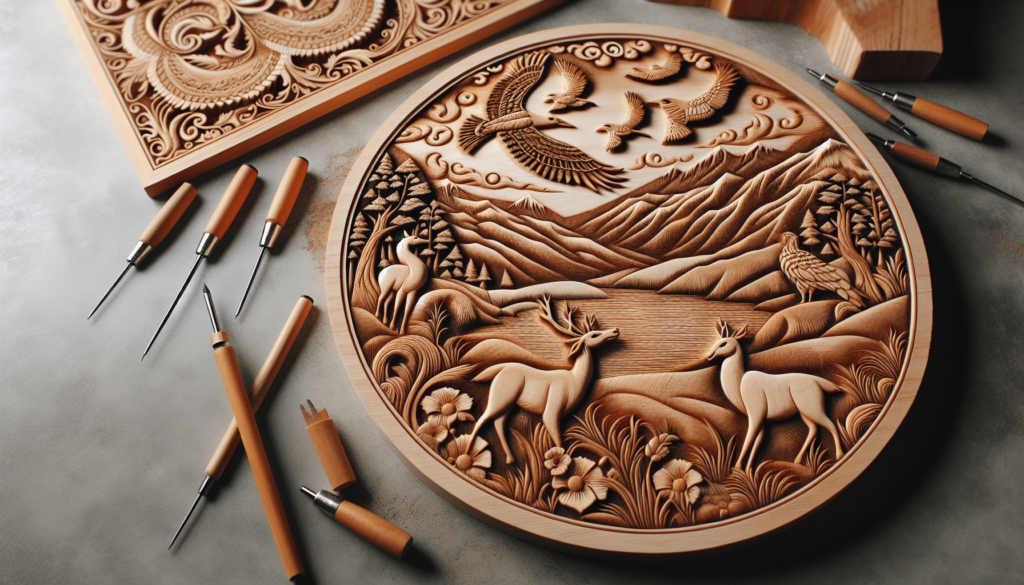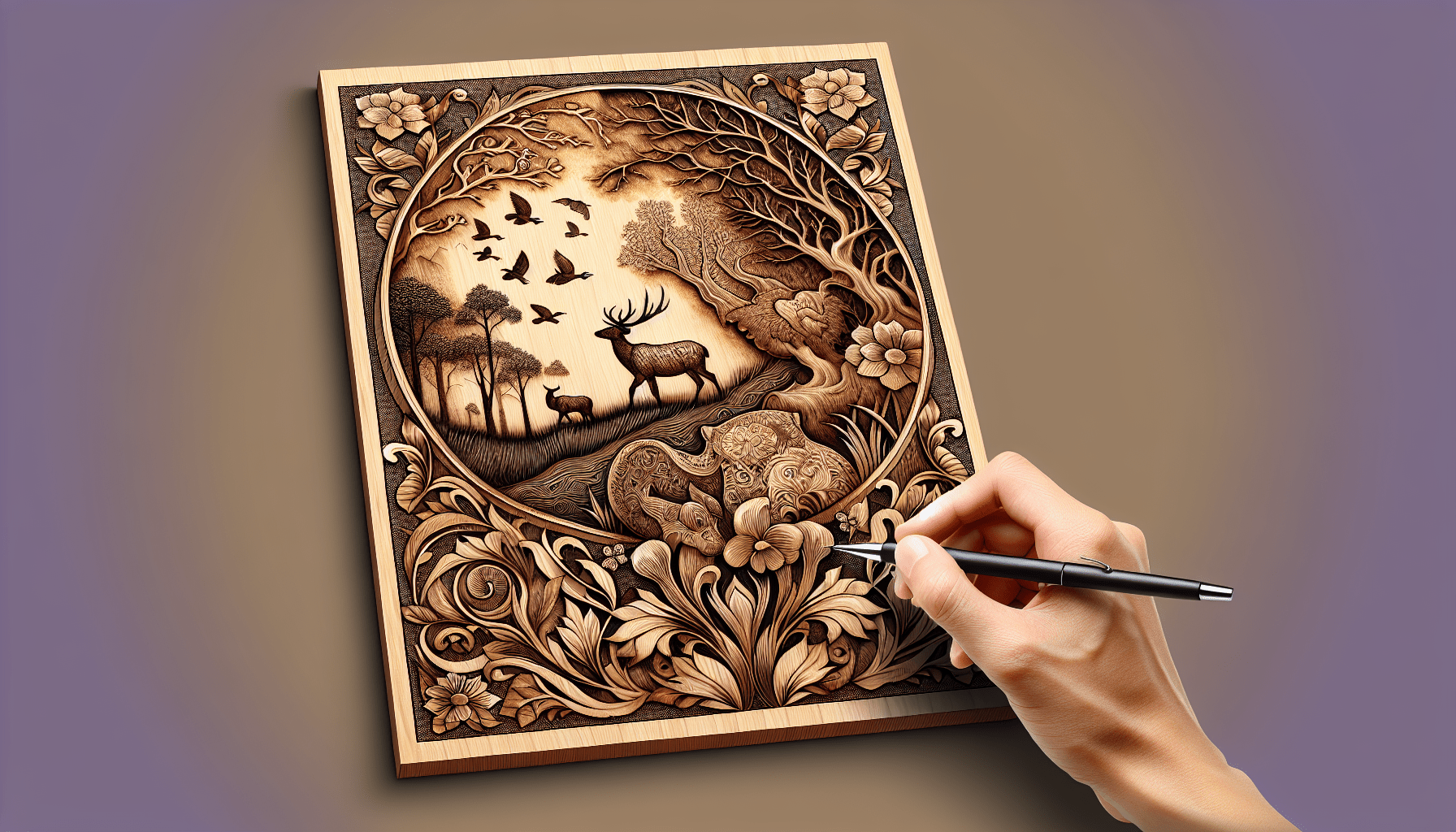I recently stumbled upon a fascinating art form that completely captured my attention: pyrography. This technique involves using a heated tool to burn designs into various materials, most commonly wood. It’s a unique blend of drawing and carving, where the artist can create astonishingly detailed and textured pieces. From simple, rustic patterns to intricate and lifelike portraits, pyrography offers endless creative possibilities. I found myself amazed at the precision and skill required to master this art, and it’s exciting to see how artists push the boundaries of what can be achieved with just heat and a steady hand. What exactly is pyrography and why does it sound so much like an exotic disease you’d rather not catch? Pyrography, for those not in the know, is the art of decorating wood or other materials with burn marks. It’s a mix between drawing and setting things on fire—two things I never thought belonged together until now.
What Is Pyrography?
“So, what type of art is pyrography?” you ask, perhaps with a mix of curiosity and skepticism. Pyrography is essentially the art of creating designs on wood, leather, or other surfaces by burning them with a heated tool. The result? Amazing patterns, detailed images, and textures that you just can’t replicate with a paintbrush or pencil.
Believe it or not, pyrography has been around for ages. This isn’t some newfangled trend cooked up by artsy types in Brooklyn lofts. Oh no, we’re talking ancient civilization levels of old. The Greeks, Egyptians, and even some East Asian cultures were at it long before the modern resurgence.
The Origin and History of Pyrography
Pyrography dates back to ancient history. The word itself is derived from the Greek words “pur” (fire) and “graphos” (writing), which kind of makes sense if you think about it—”fire writing.” There are artifacts from as far back as prehistoric human society that bear what experts think could be the first attempts at woodburning art.
During the Victorian era, pyrography (then known as “pokerwork”) enjoyed a resurgence. Victorians, being the ever-curious bunch, embraced the craft with a zeal that can only be described as “quaintly obsessive.”
How Pyrography Is Done
Ever wandered into an art store and peeked over to see someone working with what looks like a cross between a soldering iron and a fountain pen? That’s a pyrography tool, often called a woodburning pen. Here’s a quick rundown of how the magic happens:
- Selecting the Wood/Material: Most commonly, people use hardwoods like birch, maple, and cherry. But hey, if you’re feeling adventurous, leather and even gourds are not off-limits.
- Designing: You can sketch your design on the surface beforehand if free-handing isn’t your thing.
- Burning: This is where the fun (and the occasional very painful accident) happens. The woodburning tool is heated up and used to create the design.
- Finishing Up: Once the burning is done, some people like to add a finish like varnish or sealant to protect their work and make it shine.
Tools and Materials Used in Pyrography
So you’ve decided you’re interested enough to think about trying pyrography out. What do you need to get started?
Pyrography Pen
- Basic Model: Usually has a set temperature and interchangeable tips for different effects.
- Advanced Model: Features adjustable temperature settings, making it easier to work on different kinds of wood.
Wood or Other Materials
- Wood: Basswood, birch, cherry, and maple are good places to start.
- Leather: If you want a unique texture and look.
- Gourds: For the whimsical pyrographer.
Design Tools
- Pencil and Eraser: For sketching out your idea beforehand.
- Graphite Paper: For transferring designs.
Finishing Supplies
- Sealants and Varnishes: To protect the finished work.
| Tool/Material | Description |
|---|---|
| Pyrography Pen | Can be basic or advanced; used for burning designs into the material. |
| Wood | Common choices include basswood, birch, cherry, and maple. |
| Leather | An alternative surface for unique textures. |
| Graphite Paper | Useful for transferring designs. |
| Sealants/Varnishes | Used to protect the finished artwork. |
Different Styles of Pyrography
Pyrography isn’t a one-size-fits-all kind of art form. There are different styles and techniques, each offering a unique way to express your inner artist (or inner closet pyromaniac, no judgment here).
Realistic Pyrography
This style aims to create highly detailed, lifelike images that almost look like black-and-white photos. Think the Mona Lisa but etched into wood. It requires serious skill, patience, and a steady hand—qualities I suspect most of us might struggle with.
Abstract Pyrography
For those who prefer shapes and patterns over lifelike depictions, abstract pyrography allows for endless creativity. You can get inspired by geometric shapes, spirals, and other patterns that don’t necessarily form a recognizable picture.
Texture Pyrography
Texture pyrography focuses on creating tactile surfaces. You might find works in this style that capture the rough bark of a tree, the soft fur of an animal, or even the delicate petals of a flower.
Colored Pyrography
Some artists take it a step further by adding colors to their burned designs. It can involve various techniques, from using colored pencils to paints, and sometimes even natural dyes. Adding color can make the artwork pop, creating a dramatic and eye-catching piece.

Why Pyrography?
You might be wondering, “Why would anyone want to take up an art form that involves burning things?” I get it, it sounds a tad dangerous. But therein lies its charm—a blending of the delicate and the daring. Here are a few reasons why someone might find pyrography appealing:
Meditative Quality
Pyrography requires focus, patience, and a steady hand, qualities that can create a sense of mindfulness and meditation. You have to be present and attentive, which can be both calming and rewarding.
Unique Artistic Expression
Unlike traditional drawing or painting, pyrography offers textures and effects you can’t achieve with other mediums. It allows for a unique form of self-expression.
Durable Art
Because you’re essentially burning the design into the material, the resulting artwork tends to be quite durable. A well-cared-for pyrography piece can last for generations.
Customizable Gifts
Imagine gifting someone a custom piece of pyrography artwork. Personalized and handmade gifts can make a deeper impact than something store-bought.
Getting Started with Pyrography
By now, I hope I’ve piqued your interest—or at least tickled your curiosity. If you’re eager to give it a try, here are a few beginner tips to get you started:
Choose the Right Wood
As a beginner, start with a lighter, softer wood like basswood or birch. These are easier to work with and less likely to frustrate you (and make you give up before you’ve begun).
Start Simple
Your first project doesn’t need to be a masterpiece. Start with simple designs and gradually work your way up to more complex pieces. Think of it as learning to walk before you try to run a marathon.
Practice, Practice, Practice
Yep, I’m going to harp on about practice. The more you practice, the more comfortable you’ll become. Your lines will get steadier, your designs more intricate, and your confidence will grow.
Safety First
It’s not just a corny slogan—seriously, safety is crucial. Make sure your workspace is well-ventilated. Always keep a fire extinguisher or some water handy. And for the love of all things un-burning, never leave your hot pen unattended.
Use Guides and Tutorials
We live in the age of the internet. Take advantage of the plethora of guides, tutorials, and videos available. You can find step-by-step instructions, troubleshoot common problems, and even connect with other pyrography enthusiasts.

Advanced Pyrography Techniques
Once you’re past the beginner stage and looking for a challenge, there are advanced techniques that can take your pyrography to the next level.
Shading and Gradation
One way to add depth and realism to your work is through shading. This involves controlling the temperature and the pressure of your pyrography tool to create various shades and tones.
Pointillism
Much like the painting technique, pointillism in pyrography involves creating images using small dots. This technique requires patience but can produce highly detailed and textured outcomes.
Stippling
Stippling is similar to pointillism but uses larger dots. This can be an easier way to achieve textured effects without creating as many tiny details.
Cross-Hatching
Cross-hatching involves drawing intersecting sets of parallel lines. This technique is excellent for creating shading and gradient effects on your pyrography pieces.
Pyrography as a Business
If you find that you love pyrography (and the feeling is mutual), you might even consider turning it into a business. Artisanship is making a strong comeback, and people are willing to pay good money for handcrafted, unique items.
Marketplaces
There are several online marketplaces where you can sell your work, such as Etsy, Handmade at Amazon, and even your personal website.
Craft Fairs
Participating in local craft fairs and artisan markets can be a great way to get your work in front of potential buyers. Plus, you get to meet fellow artists and build a community.
Custom Orders
Offering custom designs can be a lucrative avenue. Personalized gifts, wedding decorations, and bespoke artwork can command higher prices because of the personalized touch.
Branding and Promotion
Create a brand for your work. Have a name, logo, and perhaps most importantly, an incredible Instagram account to show off your hard-earned creations.
Famous Pyrography Artists
Believe it or not, there are quite a few well-known artists specializing in pyrography. These individuals have taken the craft to new heights, turning what some might see as a niche hobby into a highly respected art form.
Julie Bender
Julie Bender is known for her stunning wildlife art. Her pieces capture the lifelike beauty of animals with incredible detail and nuance. She’s proof that with enough skill, pyrography can be as detailed and captivating as any other form of fine art.
Sue Walters
An award-winning pyrographer, Sue Walters has written multiple books on the subject and conducts workshops to teach others this captivating art form. Her work often features intricate designs and realistic portrayals that showcase her vast experience and skill.
Robert Boyer
Robert Boyer has made his mark with large-scale pyrography pieces that often incorporate elements of storytelling. His works are layered and complex, providing an immersive experience for those who view them.
The Future of Pyrography
So, where does pyrography go from here? With modern technology, the possibilities have expanded considerably. There are now digital woodburning tools, and even laser pyrography, which can create incredibly detailed patterns with astounding precision.
Digital Influence
Instagram and Pinterest have become treasure troves for pyrography inspiration. Social media has connected artists and enthusiasts worldwide, fostering a community around this ancient yet ever-evolving art form.
Sustainability
As people become more environmentally conscious, there’s a growing interest in using sustainable materials. Ethical sourcing and the use of reclaimed wood are becoming popular choices among modern pyrographers.
Mixed Media
Artists are blending pyrography with other forms of art, such as painting, carving, and even digital art. This hybrid approach is pushing the boundaries of what pyrography can be, resulting in unique and innovative pieces.
Conclusion
Pyrography might sound like something you’d only try if you were stranded on a desert island with nothing but a magnifying glass and some driftwood. Yet, it’s an incredibly rich art form with a long history, diverse techniques, and a therapeutic quality that’s hard to beat.
From ancient civilizations to your very own living room, pyrography has evolved but never lost its charm. Whether you’re looking to try a new hobby, get deeply involved, or even turn it into a source of income, pyrography offers endless possibilities for creativity. Just remember: patience, practice, and maybe a little bit of fire safety.
So, what type of art is pyrography? It’s an ancient, fascinating form of creative expression that brings together the thrill of fire and the precision of drawing. It’s a meditation in motion, a dance with flames, and a timeless way to leave your mark—quite literally—on the world.

